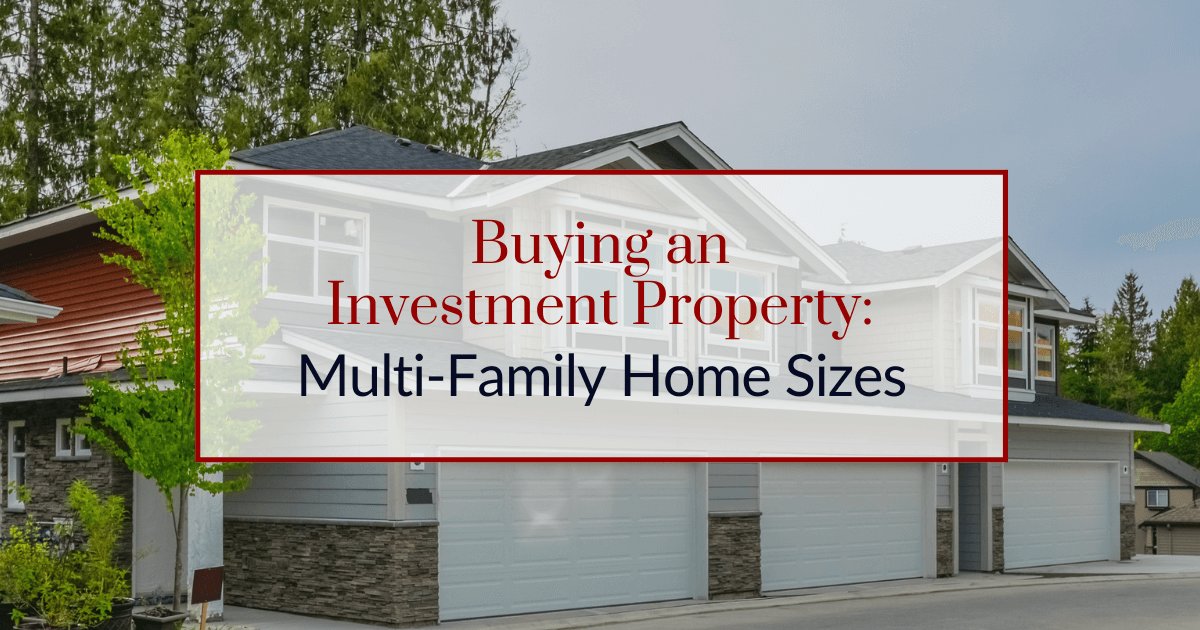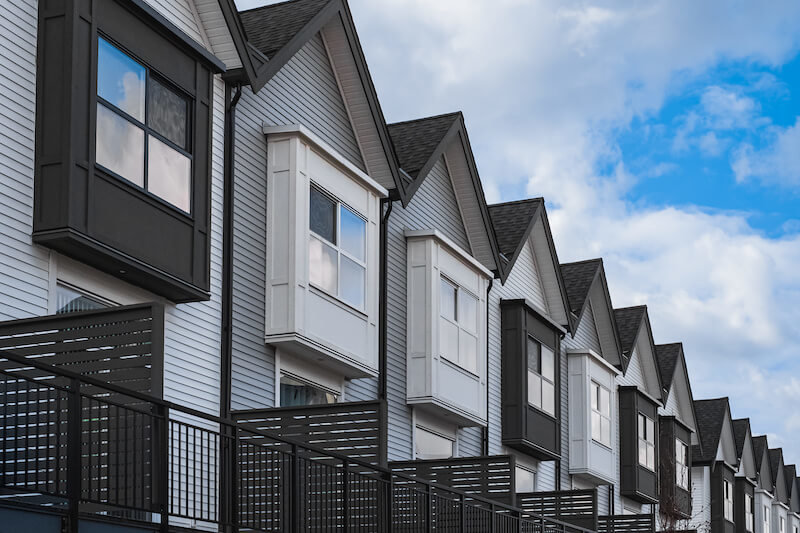Buying an Investment Property: Multi-Family Home Sizes
Posted by EdmontonRealEstate .ca on Thursday, July 20th, 2023 at 10:24am.

Are you ready to dive into the world of real estate investing? From duplexes to quadplexes, each multi-family home option presents opportunities for passive income and investment appreciation. The number of units directly impacts your potential rental income, and before worrying about all the things landlords need to know before renting a home, you need to invest in the right property. This article explores the differences between duplexes, triplexes, and quadplexes before delving into how to navigate purchasing properties with five-plus units.
Duplex vs. Triplex vs. Quadplex
When choosing between duplexes, triplexes, and quadplexes for multi-family rental homes, there are several vital points to consider. Duplexes and triplexes are smaller-sized multi-family properties consisting of separate living units and offer several advantages.
First, these smaller units often require lower down payments and can qualify for lower mortgage rates than larger multi-family properties. Second, they are generally easier to manage independently as there are fewer units and tenants to oversee. Lastly, the overhead costs, such as insurance and maintenance, tend to be less for these smaller multi-family properties.
Lower Down Payments & Mortgage Rates
While exploring the advantages of multi-family real estate, it's important to note that lower down payments and mortgage rates act as catalysts, propelling investors toward their financial goals like a tailwind pushing a sailboat forward. These factors can make a significant difference when financing multi-family homes with four or fewer units.
Compared to larger multi-family properties, these smaller units often require lower down payments and qualify for more favourable mortgage rates. This means that investors can enter the market with less upfront capital and potentially save money on interest over the life of the loan. With lower barriers to entry and more affordable financing options, duplexes, triplexes, and quadplexes become even more attractive choices for those looking to invest in multi-family real estate.
Easier to Manage Independently
Managing a multi-family property independently can be a breeze with the right tools and resources. As an independent landlord, you have the advantage of controlling all aspects of property management. With the help of online tools, you can streamline tenant communications, handle maintenance requests efficiently, and collect rent seamlessly. These tools can also assist with document management and keep track of important lease information. By managing the property independently, you have direct contact with your tenants and can promptly address any concerns or issues.
Additionally, you can set your own rules and regulations for your properties. However, it's important to note that managing a multi-family property alone requires time and effort. You must be knowledgeable about local laws and regulations regarding tenant-landlord relationships and ensure that you stay organized to handle multiple units effectively.
Less Overhead Cost
By managing a multi-family property independently, landlords can significantly reduce overhead costs, allowing for higher profit margins and increased return on investment. In fact, according to recent data, independent landlords can save up to 30% on operational expenses compared to those who hire property management companies.
Operating expenses for commercial properties typically include property taxes, insurance premiums, utility costs, common area maintenance expenses, maintenance and repair costs, snow removal, janitorial services, pest control, advertising, HVAC, and water or sewer expenses. By managing these aspects themselves, landlords can avoid paying additional fees charged by property management companies.
Additionally, by taking a hands-on approach to managing their multi-family properties independently, landlords can have more control over their expenses and make cost-effective decisions. They can negotiate better deals with contractors and suppliers and implement efficient systems for maintenance and repairs. This level of control allows them to minimize unnecessary spending and allocate their resources more effectively.
How to Buy an Investment Property With More Than 5 Units

If you're considering investing in real estate that comprises more than five units, there are a few key points to remember. First, you'll need to determine how much down payment you'll need to make. This will depend on factors such as your credit score, the type of financing you choose, and the lender's requirements. Additionally, it's crucial to calculate the property's profitability by considering factors such as rental income potential, operating expenses, and potential appreciation over time.
How Much Down Payment?
There are certain crucial things you need to know before buying multi-unit real estate, meaning properties with five-plus units; the first thing is the importance of estimating down payments. The down payment amount typically depends on various factors, including the lender's requirements and your financial situation. Generally, lenders require a higher down payment for multi-family properties than single-family homes. A common condition is a minimum of 20% down payment for investment properties, which can vary.
For example, if you purchase a $500,000 multi-family property with five-plus units, you may need to put down at least $100,000 as a down payment. Remember that some lenders might have specific requirements based on your credit score and debt-to-income ratio. It's essential to shop around and compare different financing options to find the best terms and rates that suit your investment goals and financial capabilities.
Calculate Profitability
Calculating profitability for a multi-family property involves determining the net operating income (NOI) by subtracting expenses from rental income. To calculate the NOI, you must gather information about the property's rental income and various expenses such as maintenance, insurance, property taxes, and management fees. Subtracting these expenses from the total rental income will give you the NOI. Once you have calculated the NOI, you can use it to determine the property's cash flow and cap rate.
Cash flow is obtained by subtracting the monthly mortgage payment from the NOI, while the cap rate indicates the return on investment. Notably, a desirable cap rate typically falls within the range of 5–10%. By accurately calculating profitability, you can make informed decisions about investing in multi-family properties.
Which Multi-Family Home Size Fits Your Needs?
When deciding between multi-family rental home sizes, carefully assessing your investment goals and market conditions is crucial. Consider the advantages and disadvantages of duplexes, triplexes, and quadplexes in terms of potential income, financing options, and management requirements. Remember that location is vital to the success of your investment. By considering these factors and making an informed decision, you can set yourself up for success in multi-family real estate investing.

